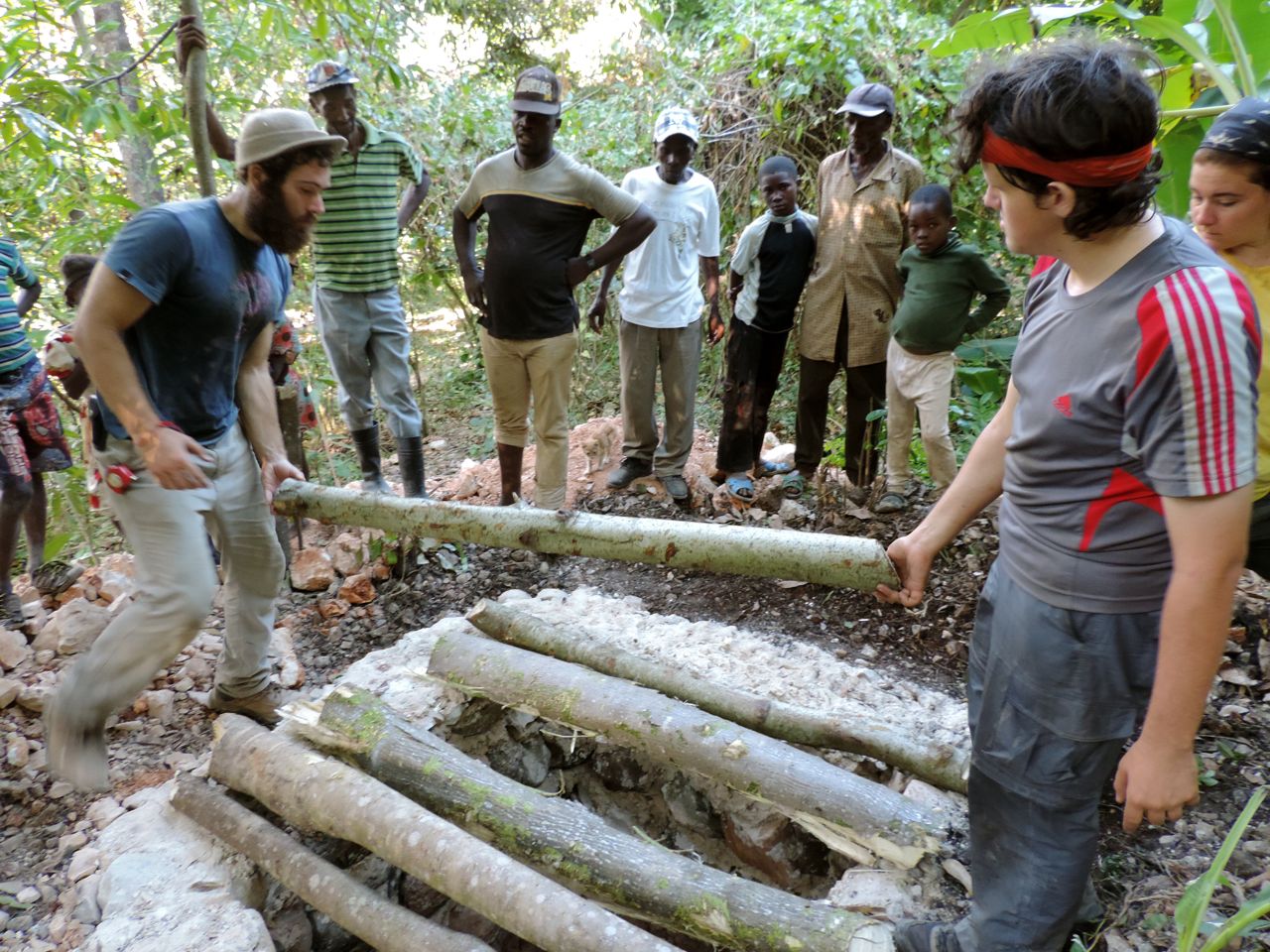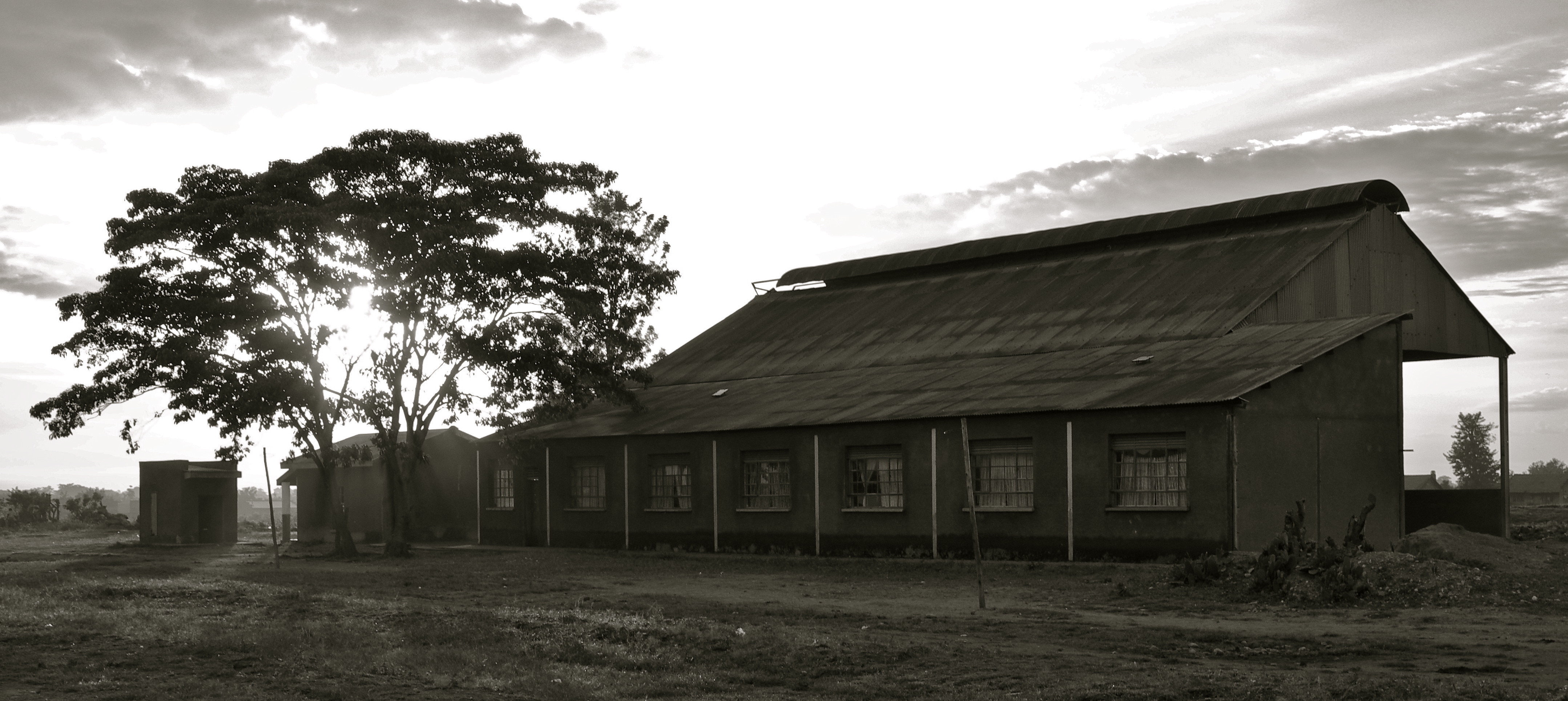In La Fond-Jeanette, the village in Haiti where we spent a month building latrines with Children of the Border, there are no roads. There is no plumbing. There is no electricity except from a few small solar panels that the residents use to charge their cellphones. Water has to be carried up the mountain from the river below. Sometimes it is carried by mules. More often it is carried in buckets or jerricans on people’s heads. Going to La Fond-Jeanette is like stepping back in time, with small anachronistic intrusions. Like the boom box that plays Spanish pop music from an SD card. Like the battery-powered bullhorn hanging on the wall among the pots and pans. Like the torn Spongebob and Nemo teeshirts some kids wear as they run up and down the mountain trails.
Life happens outside in La Fond-Jeanette. With corrugated zinc roofs, during the day the houses are too hot. Without electricity, at night they are too dark. At any time of day neighbors could and would visit our house to talk. The maze-like trails that connect every house on the mountain pass through many yards on their way. Several times a day a person passed through our yard with a bucket of water on their head on the way home from the river or carrying the day’s harvest of chinas (like oranges, but better) in the basket made with the front of their shirt. These passings are not intrusions but moments of community coherence. The meetings are part of the lattice of community that is essential to survive in these mountains.
It is because of this pervasive sense of community, I believe, that the mason—who patiently taught us how to build latrines in Haiti—went out of his way to help us down the mountain. He met us at 4am at our house, which is about a 30 minute climb down one mountain and up another from his house. To catch the truck out of the mountains we needed to hike two and a half hours up and down the mountains. He walked with us. He walked with us in the dark and in the cold merely to provide an extra strong back just in case our packs became too heavy for any one of us to carry alone. Then he turned right back around and walked home.
The importance of community—of life sustaining community—was most obvious to me as we constructed the latrines. The latrines are small structures that only a few people can work on at any one time.

Yet several of the men whose homes were getting latrines came to each site to help. Indeed as each structure progressed more and more people showed up. This might also have something to do with the novelty of Americans working on the site. Still, I got the sense that building the 20 latrines was considered one united project, rather than as individual structures. It was a community building project and it did not matter that this one was not theirs.
This kind of community is striking to me. It shouldn’t be, but it is. The ease at which neighbors pass through each other’s space, the selflessness the mason showed in his actions toward us strangers, and the united team of builders are not how I have experienced community. In the States, I didn’t even know many of my neighbors and several of them we avoided because of some often trivial infraction in the past. We lived inside. We rarely met each other—even more rarely without an appointment. When a windstorm blew a tree into my neighbor’s house we all sympathized with their predicament, but most of us returned to our home thankful our house remained intact. I believe the residents of La Fond-Jeanette would have rebuilt that house together in a matter of days. Of course this is not entirely fair. There are many communities in the States that help and support each other selflessly. But my experience has rarely been of as unselfconscious a community as La Fond-Jeanette.

State of Formation - From Just Us To All Of Us says:
February 13, 2014 at 8:01 am
[…] month in Haiti I joined a rural community coming together to build twenty latrines for twenty individual […]
From Just Us To All Of Us says:
February 13, 2014 at 12:01 pm
[…] month in Haiti I joined a rural community coming together to build twenty latrines for twenty individual […]